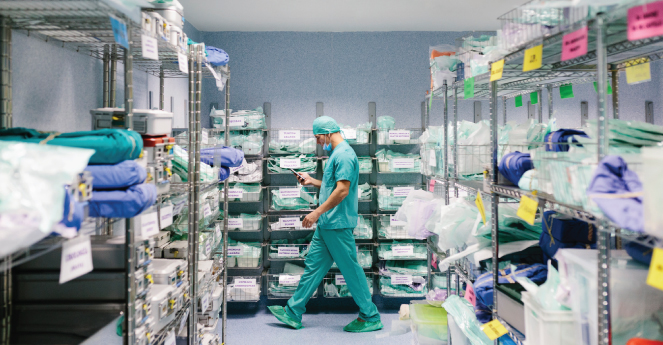Factor #1: Importance of staff efficiency
“If making the most of staff time is important, then it’s important for providers to consider technology that enables their team to perform the jobs they were hired to do,” explained Jason Rosemurgy, Senior Vice President of Sales and Marketing at Terso Solutions. “A recent study found that nearly 40% of an average nurse’s shift time is spent on ‘wasteful’ activities—often looking for items like supplies and critical inventory.”
This issue is especially acute with the pandemic worsening staff shortages. According to a recent US News article, healthcare employment still remains 1.1% below pre-pandemic levels, making staff shortages the top patient safety concern. “RFID technology, further enabled with the right integrated software platform can direct nurses to the right inventory, allowing nurses to refocus on patients and urgent procedures,” Rosemurgy described.
Factor #2: Criticality (not necessarily cost) of inventory to be tracked
“As we learned in the pandemic, while expensive inventory is often critical, critical inventory isn’t always expensive,” Rosemurgy stated. Shortages of PPE highlighted the need for technology able to accurately read inventory levels. Certain products also have specific storage requirements, underscoring the use case for technology that can capture data. “Knowing for certain that a particular product has been stored at the proper temperature can be a requirement for items like tissue and biologics,” Rosemurgy described.

Factor #3: Need for real-time, accurate data
“Often, hospital inventories are only as good as the last time somebody completed a physical assessment,” Rosemurgy explained. “RFID is automated, requires no line of sight, and connects inventory data to the proper software platforms in real time.”
RFID vs Barcoding for All Inventory or for Selected Areas and Functions
The choice between RFID and barcoding does not need to be either/or. As Rosemurgy described, “Barcode technology is a solid performer in applications where item value is often lower, and accuracy of the items tracked doesn’t need to be 100%. High turn, med surg products often utilize barcodes and workflows like patient charting and tracking.”
RFID was traditionally reserved for high-value items, but is becoming more pervasive as cost decreases and healthcare’s need for automation increases. “Lower cost med-surg products could be incorporated into an RFID 2 bin Kanban system, where RFID tagged bins can create automated demand signals and save materials staff tremendous amounts of time,” Rosemurgy said. “We are also seeing the emergence of RFID room-based systems which focus on tracking a product as it moves throughout a healthcare facility.”
How to Evaluate Which to Adopt and Implement
The decision of which technology and vendor can seem complicated with so many options. Essential criteria to consider are:
- Experience level
- Depth of engineering resources
- Market penetration
- Breadth of solution offerings
- Ownership structure
“I would encourage providers evaluating any technology to dig deep on their prospective partner’s ability to support their ongoing needs over time, historical technology performance, and customer communication strategies,” Rosemurgy stated.
Red Flags to Note
As with any evaluation process, there are areas to watch out for. “One overt red flag would be the promise of 100% item readability, in all applications, with any type of products or packaging, and in any environment,” Rosemurgy described. “Today’s RFID technology and tags are robust and very advanced, but certain steps need to be considered to optimize it.”
This highlights why having the right technology partner is key. “Digging deeper into the partner history, profile, level of experience, and customer base will help providers avoid some bigger pitfalls. Taking a few extra steps can save a lot of post-purchase regret down the road,” Rosemurgy concluded.








